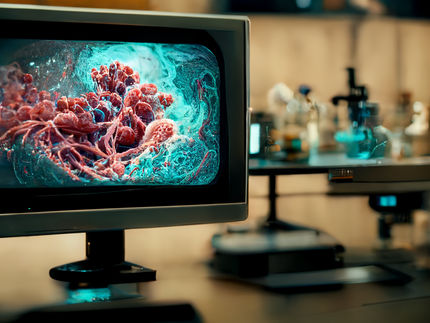Frost & Sullivan anticipates large-scale switch to digital pathology systems
Ability to tackle escalating workloads and reduce costs underlines appeal
Evolving technologies and market forces reveal that digital pathology is poised to radically affect the daily workflow and activities of pathologists and diagnostic laboratories. Attracted by the prospect of improved connectivity and reduced overall healthcare costs, most laboratories are anticipated to switch over to digital pathology systems over the next 7-8 years.
New analysis from Frost & Sullivan, U.S and European Digital Pathology Market, estimates the market in Europe to expand from $62.23 million in 2012 to reach $143.59 million in 2019, while the market in the United States is projected to increase from $77.23 million to $205.67 million over the same time period. During this time, a spurt in anatomic pathology will result in the U.S. digital pathology market enjoying a faster compound annual growth rate (CAGR) – 17% – than Europe which will chalk up a slower CAGR of 12.7%.
“In Europe and the United States, pathology laboratories and academic departments have recognised the importance of adopting digital pathology,” notes Frost & Sullivan Senior Research Analyst Divyaa Ravishankar. “They are looking to replace traditional microscopes with digital scanners and create the necessary IT infrastructure to support this move.”
An escalating workload in many clinical laboratories – anticipated to increase by 8 to 10% each year – is motivating greater demand for digital pathology systems. On their part, vendors are designing high throughput scanners that will meet these ever heavier workloads.
Digital pathology will enable academicians and professionals to have access to a wide range of databases, while saving on the cost of preparing new histological slides.
“Medical images have become increasingly important to surgeons and digital image formats ensure that information is integrated and easily available for diagnosis,” explains Ravishankar. “Unlike radiology, surgeons and pathologists make diagnostic decisions with the help of pathology images, which are critical to studying disease progression and monitor and select therapy options.”
While the market is promising, several major challenges still loom. The lack of FDA approval for primary diagnosis and a shrinking pool of skilled pathologists are slowing the adoption of digital pathology. Further, despite successes in some parts of Europe, true interoperability and standardisation in digital pathology have been hard to achieve due to the image formats and complex workflows involved.
Strategic partnerships will be essential to pushing market growth. Vendors who provide one or two components for the entire digital pathology portfolio will need to identify the right partner to devise a more robust and complete offering.
“Additionally, vendors should evaluate models that optimally spread financial risk between lab departments or between the manufacturer and the laboratory,” concludes Ravishankar. “ROI case studies that highlight the value of integrated digital pathology solutions should also be showcased to end users.”
Organizations
Other news from the department business & finance
These products might interest you

Software & Data Management by Carl Zeiss
Bring Context to your Data with ZEISS Connected Microscopy
Your solution for microscopy, analysis and data management

HYPERION II by Bruker
FT-IR and IR laser imaging (QCL) microscope for research and development
Analyze macroscopic samples with microscopic resolution (5 µm) in seconds

Get the analytics and lab tech industry in your inbox
By submitting this form you agree that LUMITOS AG will send you the newsletter(s) selected above by email. Your data will not be passed on to third parties. Your data will be stored and processed in accordance with our data protection regulations. LUMITOS may contact you by email for the purpose of advertising or market and opinion surveys. You can revoke your consent at any time without giving reasons to LUMITOS AG, Ernst-Augustin-Str. 2, 12489 Berlin, Germany or by e-mail at revoke@lumitos.com with effect for the future. In addition, each email contains a link to unsubscribe from the corresponding newsletter.
Most read news
More news from our other portals
Last viewed contents
Fluorotechnics appoints InterChim as sales and marketing partner for France
Heinrich Emanuel Merck Award for 2010 granted to leading Italian scientist - Professor Torsi from the University of Bari receives Analytical Sciences distinction




























































